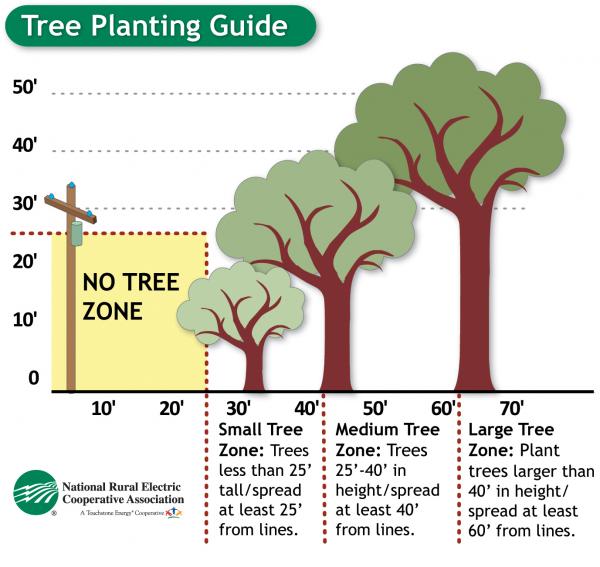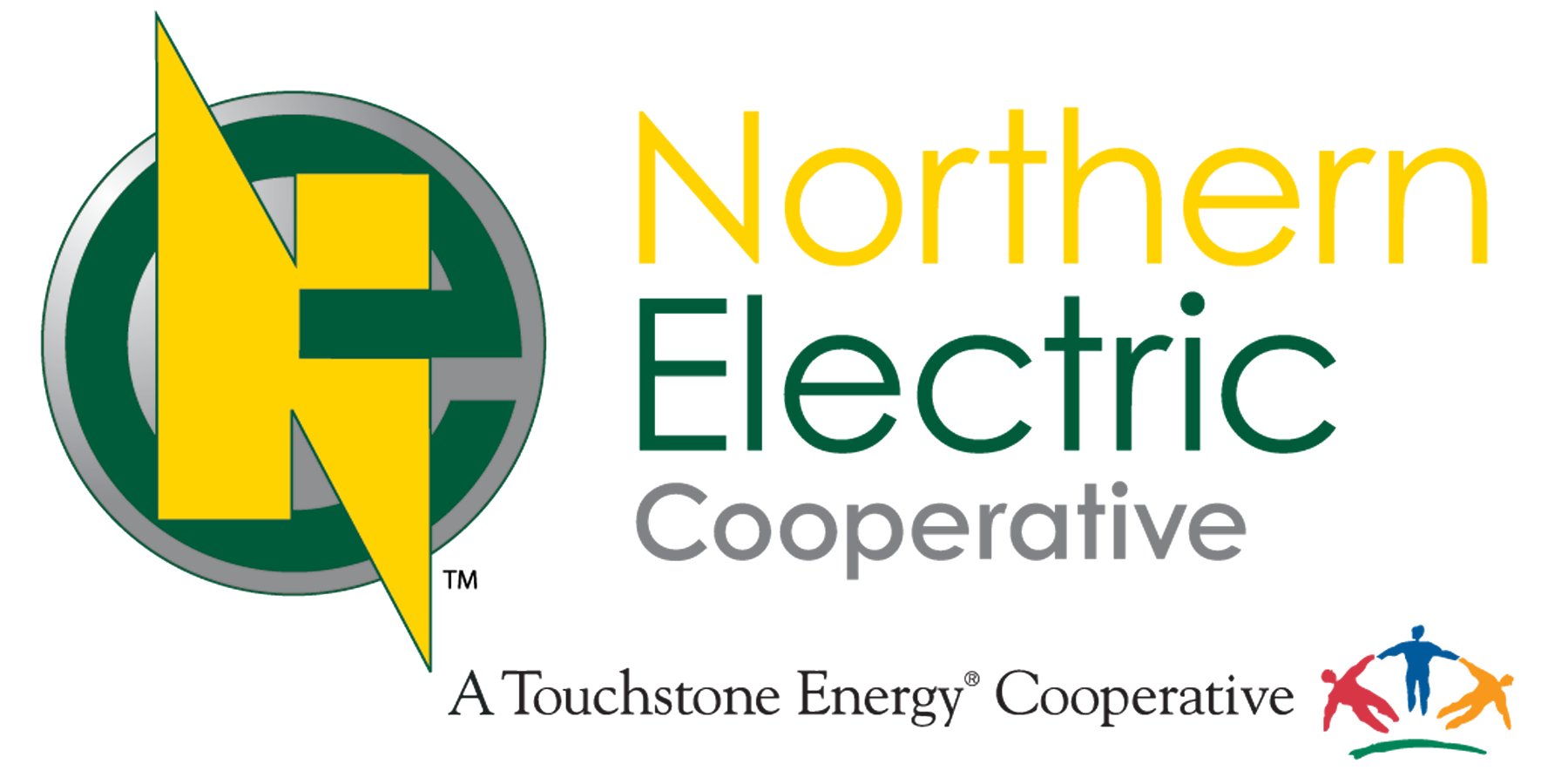Trees can be a great asset to any landscape, and when planted appropriately, can offer shade during the heat of the summer and protection against the cold winds of the winter. However, trees planted in the wrong place can become a nuisance – and even dangerous - when they grow near power lines.
“We have a responsibility to keep the line clear for the safety of everybody,” Northern Electric Operations Manager Mike Kelly said.
Northern Electric Cooperative employs a contractor to systematically trim trees around power lines throughout the entire year. Keeping tree limbs away from high-voltage lines is crucial to the maintenance program of the co-op so the foliage does not pose a safety hazard or cause power outages.
Cooperative members can do their part by reporting any trees or branches that have grown into the line on their property to Northern Electric Cooperative. The co-op will trim or remove the trees that are interfering with the line at no cost to the member. To prevent a future issue, members are also encouraged to follow a few simple guidelines when planting new trees.
“They (trees) look so innocent when they are two feet tall but after a few years they can become a problem,” Kelly said. “It’s very important to not make a future problem.”
When planting a new tree, members should do some research on the height and width of the tree once it reaches its full maturity. The size of a fully mature tree guides the distance it should be planted from an overhead power line.
- Plant Large Trees 60 Feet Away: A tree that will grow and spread more than 40 feet such as a maple, oak, birch, or pine tree should be planted at least 60 feet away from any overhead power lines.
- Plant Medium Trees 40 Feet Away: A medium tree that will grow to 25-40 feet tall at its full maturity such as an ash or birch tree should be planted 40 feet away from overhead power lines.
- Plant Small Trees 30 Feet Away: Small trees that will never grow more than 25 feet tall should be planted at least 30 feet away from a power line.
There should always be a clearance distance of 20 feet around any overhead power line. This is considered the ‘no tree zone’ as depicted in the graphic below:

Keep Trees and Shrubs Away From Underground Equipment
Co-op members who are planting shrubs and flowers this spring should also remember to keep plants clear of any underground pad-mount transformers or enclosures that may be on their property.
“It’s not just the overhead we need to keep clear and that we need to perform maintenance on,” Kelly said.
Small shrubs and trees should be kept at least ten feet away from any underground cabinets or cables. It is important to call 811 at least two business days before any type of planting so underground utility lines can be located and homeowners can avoid costly damage or severe injury.
Planting trees and shrubs in the appropriate place will alleviate the need for Northern Electric Cooperative to trim or remove trees that may grow into power lines. The co-op does not want to cut or trim a beautiful mature tree on a member’s property but if it is interfering with the line it must be maintained.
“It’s a shame if they had been planted far enough away we wouldn't have to worry about it,” Kelly said.
Which is the reason tree-planting planning today will prevent problems in the future.
